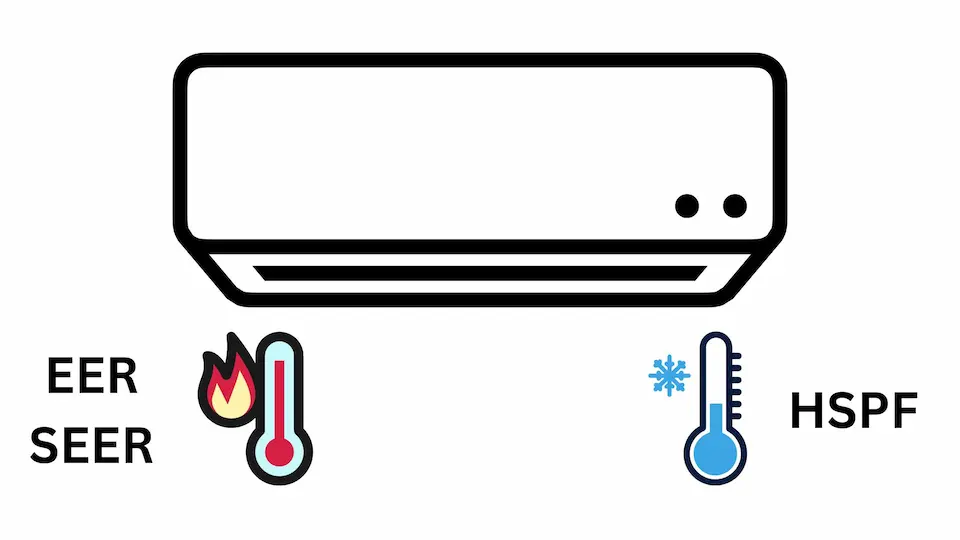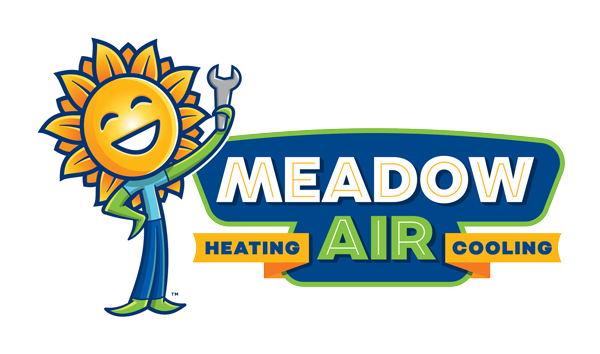HVAC Efficiency Ratings Explained

Whether you’re considering cooling your home during the heat of summer or warming it up on chilly winter nights, HVAC ratings are your compass to navigate the vast landscape of heating, ventilation, and air conditioning systems.
These ratings, such as SEER, EER, and HSPF, unveil the inner workings of these systems, revealing their energy efficiency and performance.
This article explains each rating in detail, including their calculator and importance, to help you make informed choices that align with your comfort goals and budget.
HVAC Ratings

When selecting an HVAC system, you’ve likely encountered a range of ratings associated with them. It’s important to clarify that each of these ratings has a positive significance, although they fulfill different roles. Without further ado, let’s delve into the meaning behind each rating and determine which one is most suitable for your home.
HVAC systems have three ratings:
- EER – Energy Efficiency Ratio
- SEER – Seasonal Efficiency Rating
- HSPF – Heating Seasonal Performance Factor
EER (Energy Efficiency Ratio)
The Energy Efficiency Ratio (EER) is a measure used to evaluate the energy efficiency of cooling equipment, particularly air conditioners and heat pumps. It provides insight into how efficiently these systems can cool space while consuming electrical energy.
The EER is calculated by dividing the heat output of the HVAC system by the power input it requires to operate. The resulting value represents the amount of cooling output the system provides for each unit of energy it consumes.
A higher EER value indicates a more energy-efficient system, as it can achieve a certain level of cooling with lower energy consumption.
Mathematically, the formula for calculating EER is:
- EER = Heat Output (BTUs) / Power Input (watts)
- 12,000 BTU / 900 watts = 13.3 EER
The average EER of air conditioning systems is 8.5. An A/C with 8.5 or above EER is considered a very energy-efficient unit.
SEER (Seasonal Efficiency Rating)
One-time testing is enough to measure EER rating – however, it can’t be said the same about a more complex SEER rating.
SEER, or Seasonal Energy Efficiency Ratio, is a crucial metric used to assess energy efficiency. SEER takes into account the system’s performance over an entire cooling season, which provides a more realistic and comprehensive representation of its efficiency.
Basically, SEER measures the amount of cooling output a system provides over a cooling season, divided by the total electrical energy input required to generate that cooling. And just like the EER, the higher the ratio, the more efficient the A/C is.
The formula for calculating SEER involves integrating the system’s efficiency over a range of conditions (different outdoor temperatures and varying cooling demands):
- SEER = Total Cooling Output (BTUs) / Total Electrical Energy Input (watt-hours)
- 5,000,000 BTU (for seasonal cooling) / 300,000 kW (total energy used) = 16.6
The standard SEER for modern air conditioning systems is 13 or 14, with 26 SEER being the maximum.
What you may not know is that this data is retrieved from a laboratory environment with HVAC systems working at full performance. Hence, real-life HVAC efficiency ratings may vary since A/C systems aren’t working at their potential throughout the season.
HSPF (Heating Seasonal Performance Factor)
Bear with me while we’re going through the final measurement unit for the times when you don’t want to freeze at home.
HSPF, or Heating Seasonal Performance Factor, is a metric used to measure the energy efficiency of heat pumps, particularly in the heating mode. Heat pumps are versatile HVAC systems that can provide both heating and cooling by moving heat between indoor and outdoor environments.
HSPF specifically focuses on the performance of a heat pump during the heating season, accounting for factors like outdoor temperature variations and the system’s efficiency at different operating conditions.
The HSPF rating is calculated by dividing the total heating output provided by the heat pump over a heating season (measured in BTUs) by the total electrical energy input (measured in watt-hours) required to produce that heating. Like SEER (Seasonal Energy Efficiency Ratio) for cooling, HSPF considers a range of conditions to provide a more accurate representation of the system’s efficiency over an extended period.
The formula for calculating HSPF is:
- HSPF = Total Heating Output (BTUs) / Total Electrical Energy Input (watt-hours)
- 200,000,000 BTU (for heating season) / 25,000,000 kW (total energy used) = 8
As with any unit here, the higher the ratio of HSPF, the more money it will save you during the cold season.
What HVAC Energy Efficiency Rating Should I Prioritize?
To understand which HVAC efficiency rating is more important, you should decide whether you require your HVAC system to heat or cool your residence. In short, here are the two main purposes SEER and HSPF serve:
- Purchase air conditioning with a higher SEER rating for hot seasons
- Purchase air conditioning with a higher HSPF rating for cold seasons
The rating you should pay attention to depends on how you intend to use your HVAC system.
EER, at the same time, shouldn’t be overlooked. The metric indicates that your A/C is capable of working at its full potential during the peak days in hot-dry climates.
Cost of Low and High-Efficiency HVAC Systems
It’s no secret that high-efficiency HVAC systems are priced higher than their low-efficiency counterparts. While the initial price difference between these two options might be noticeable, it’s essential to take a broader view that encompasses both short-term expenses and long-term savings.
Low-efficiency HVAC systems generally have a lower upfront cost, making them initially more budget-friendly. However, these systems often consume more energy to provide the same level of heating or cooling, resulting in higher monthly utility bills over time. They might also require more frequent repairs and maintenance, adding to the overall cost of ownership.
On the other hand, high-efficiency HVAC systems typically come with a higher initial investment due to advanced technology and components. Despite this, their energy-efficient design leads to substantial long-term savings on energy bills. These systems consume less energy to achieve the desired indoor temperature while providing a significant return on investment over the lifespan of the system. Additionally, many high-efficiency systems qualify for energy efficiency incentives, tax credits, and rebates, further offsetting the initial cost.
While a high-efficiency system might have a higher upfront cost, its lower operating expenses and potential financial incentives make it a financially sound choice in the long run. Moreover, the enhanced comfort, quieter operation, and better indoor air quality provided by high-efficiency systems can add significant value to your home and quality of life.
Ultimately, the decision between low and high-efficiency HVAC systems should be based on a careful evaluation of your budget, energy goals, and long-term financial outlook.
Found Your Ideal HVAC System? Have It Installed!
Your comfort at home is our utmost priority at MeadowAir. We will help you achieve that with a quick and hassle-free HVAC installation service. Imagine stepping into your home, feeling a perfect balance of warmth in the winter and refreshing coolness in the summer, all while saving on your energy bills.
Our professional HVAC services combine innovative technology with expert craftsmanship, ensuring you enjoy unparalleled comfort year-round. Elevate your living spaces with HVAC systems – where efficiency meets luxury and where your comfort is our top priority. Get in touch and experience the difference today!
